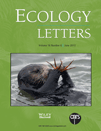Do native species limit the success of invasive species? Does the physical environment alter the ability of native species to constrain invasive species?
Biotic resistance is the ability of a native community to suppress invaders via species interactions (e.g. predation, competition, parasitism). My work has described how sharp physical gradients can alter the extent of biotic resistance by native species (Cheng and Hovel 2010; Oecologia). Here, spiny lobsters (Panulirus interruptus) and a native whelk (Pteropurpura festiva) limit the spread of the invasive Asian mussel (Musculista senhousia) within a southern California estuary.

Estuaries such as Tomales Bay (just north of San Francisco Bay) exhibit sharp gradients in environmental conditions (e.g. temperature, salinity) that can alter the interaction among predators and prey.
I saw this pattern again in Northern California involving a trophic cascade. Here, I have shown how environmental drivers (temperature and salinity) mediate a trophic cascade and the resulting biotic resistance (Cheng and Grosholz 2016; Ecosphere). Here, native species (Cancer spp.) consume invasive oyster drills, with indirect positive effects for the native Olympia oyster. However, stressful high temperature and low salinity conditions can preclude the native crabs, allowing the oyster drills to prey upon native oysters. I addressed this question by manipulating field predator access in combination with field surveys.

Brown rock crabs (Cancer antennarius) consume invasive oyster drills, which indirectly benefits native oysters.
David Kimbro, Ted Grosholz and I have also synthesized data from marine studies of biotic resistance to show how competitive biotic resistance among primary producers is weak, whereas consumptive biotic resistance is equally strong in marine and terrestrial systems (Kimbro, Cheng, and Grosholz 2013; Ecology Letters). Biotic resistance in marine systems also strongly increases towards the equator.

